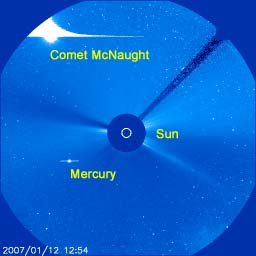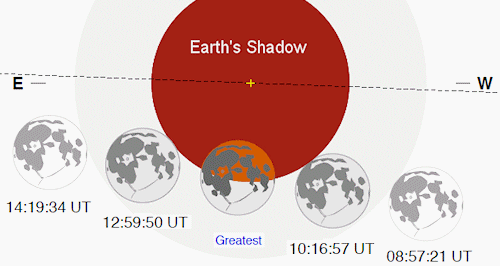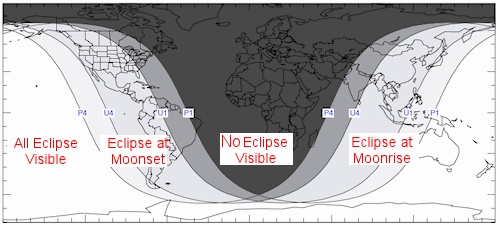 Hi Hippie
Hi Hippie
i posted somewhere about the comet but don't remember where..anyhow..it is a blue comet...
and i feel a tidbit from the last astrology posting sums it up well*The Full Moon* eclipses shortly after the Solstice and a Grand Cross
alignment occurs. This is a powerfully important eclipse and signals
what may be the most dramatic period of the whole year. The Full Moon
falls in the midst of the Great T-Square of 2010 turning it into a Grand
Cross. This cosmic trigger may be a turning point where the energy of
the heart is powerfully activated helping you to remember your true
essential nature.
here's some stuff that should helpA New Comet McNaught Brightens
Jun 8, 2010 Kelly Whitt
Comet McNaught C/2009 R1 and NGC891 - Image by John ChumackOne of the brightest comets of the past decade was Comet McNaught, and now a new 2010 comet named Comet McNaught is brightening into naked eye visibility.
The previous Comet McNaught, (C/2006 P1), that made headlines around the world was discovered by Australian astronomer and comet hunter Robert McNaught of the Siding Spring Observatory, who also discovered the new comet that was named for him. The new Comet McNaught, (C/2009 R1), was discovered on September 9, 2009 (9/9/09). This comet is currently approaching the sun where it is brightening and is expected to become visible against dark skies without any optical aid.
The Path of Comet McNaught
Comet McNaught is currently leaving the constellation Andromeda as it heads for Perseus. On June 14 and 15, 2010, the comet will be very close to Delta Persei. After Comet McNaught leaves Perseus it will enter Auriga, where it will pass the star Capella around June 21 and 22. Capella is the sixth brightest star in the sky and therefore makes a good guidepost for those trying to locate the comet. On June 24 and 25, Comet McNaught passes the star Menkalinan, or Beta Aurigae, the second brightest star in the constellation Auriga after Capella.
All the June dates for finding Comet McNaught require observers to rise early in the morning, as the constellations named do not appear above the northeastern horizon until the early morning hours. A new moon this weekend, June 12, will provide especially dark skies for those attempting to find this faint fuzzball. The comet is currently about 5th magnitude, around the threshold of brightness for observing without a telescope, so starting with a telescope or binoculars is encouraged before moving on to trying to spot Comet McNaught without optical aid. The comet will be brightening until it reaches its closest point to the sun on July 2, when it will no longer be visible.
When Comet McNaught edges away from the sun, it will dive down into southern skies in the evening and no longer be much of a target for Northern Hemisphere observers
Comet McNaught: What to Look For
What an observer sees when viewing Comet McNaught depends partly on the atmospheric conditions. In light polluted locations, the tail will be much more difficult to detect. The tail stretches more than a million kilometers long, and observers and astrophotographers have already spotted the bluish white ion tail and captured it on film. The head of the comet is a greenish hue, with the atmosphere around the coma billowing to larger than the planet Jupiter. For images and a sky map, visit spaceweather.com.
Source: IAU Minor Planet Center, Spaceweather.com
http://news.suite101.com/article.cfm/a-new-comet-mcnaught-brightens-a246284****************************************
also check this linkhttp://www.space.com/spacewatch/070112_ns_comet_mcnaught.html
But Comet McNaught is now also visible to armchair astronomers via images posted to the Internet from the Solar and Heliospheric Observatory (SOHO) spacecraft. And beginning next week, it will head rapidly south and likely become a spectacle for skywatchers in the Southern Hemisphere.
Summer find
The comet was discovered by astronomer Robert H. McNaught Aug. 7 at Siding Spring Observatory, near Coonabarabran, New South Wales, Australia.
McNaught discovered this comet when it was a few degrees east of the "head" of Scorpius, on CCD images obtained with the observatory's Uppsala Schmidt telescope. The images had been obtained as part of the Siding Spring Survey, whose mission is to contribute to the inventory of potentially hazardous asteroids (PHAs) and comets (PHOs) that may pose a threat of impact and thus harm to civilization
rest at the link plus a link to a vid **********************************************************
http://science.nasa.gov/science-news/science-at-nasa/2010/24jun_lunareclipse/June 24, 2010: This Saturday morning, June 26th, there's going to be a lunar eclipse—and for many residents of the USA, it's going to be a big one.
The eclipse begins at 3:17 am PDT (10:17 UT) when the Moon enters the sunset-colored shadow of Earth. By 4:38 am PDT (11:38 UT), the moment of greatest eclipse, 54% of the Moon's diameter will be covered. From beginning to end, the event lasts almost three hours.

Although the eclipse is only partial, it will be magnified in size and charm by the "Moon Illusion"--a result of the eclipse occurring close to the horizon from viewing sites in the USA.
For reasons not fully understood by astronomers or psychologists, low-hanging Moons look unnaturally large when they beam through trees, buildings and other foreground objects. In fact, a low Moon is no wider than any other Moon—cameras prove it—but the human brain insists otherwise.
Who are we to argue?

The effect will be particularly strong in western and central parts of the USA and Canada where the Moon will be setting as the eclipse reaches maximum. (Observing tip: Look low and to the west just before dawn.) The fact that the extra size is just an illusion in no way detracts from the beauty.
People in New England and northeastern Canada will justmiss it. The Moon sets shortly before the eclipse begins.
Halfway around the world, observers in India, Japan, and parts of East Asia will experience the same phenomenon. They'll see the eclipse on Saturday evening as the Moon is rising. The Moon Illusion will be fully active as Earth's shadow sweeps across low-hanging lunar terrain.
It almost makes you feel sorry for people living on the dreamy islands of the South Pacific. There the eclipse takes place directly overhead, high in the midnight sky where the Moon Illusion does not work. That's okay. A partial lunar eclipse is a beautiful thing all by itself.
Enjoy the show
****************************
and a favorite site for showing some sky stuffhttp://www.shadowandsubstance.com/ 
